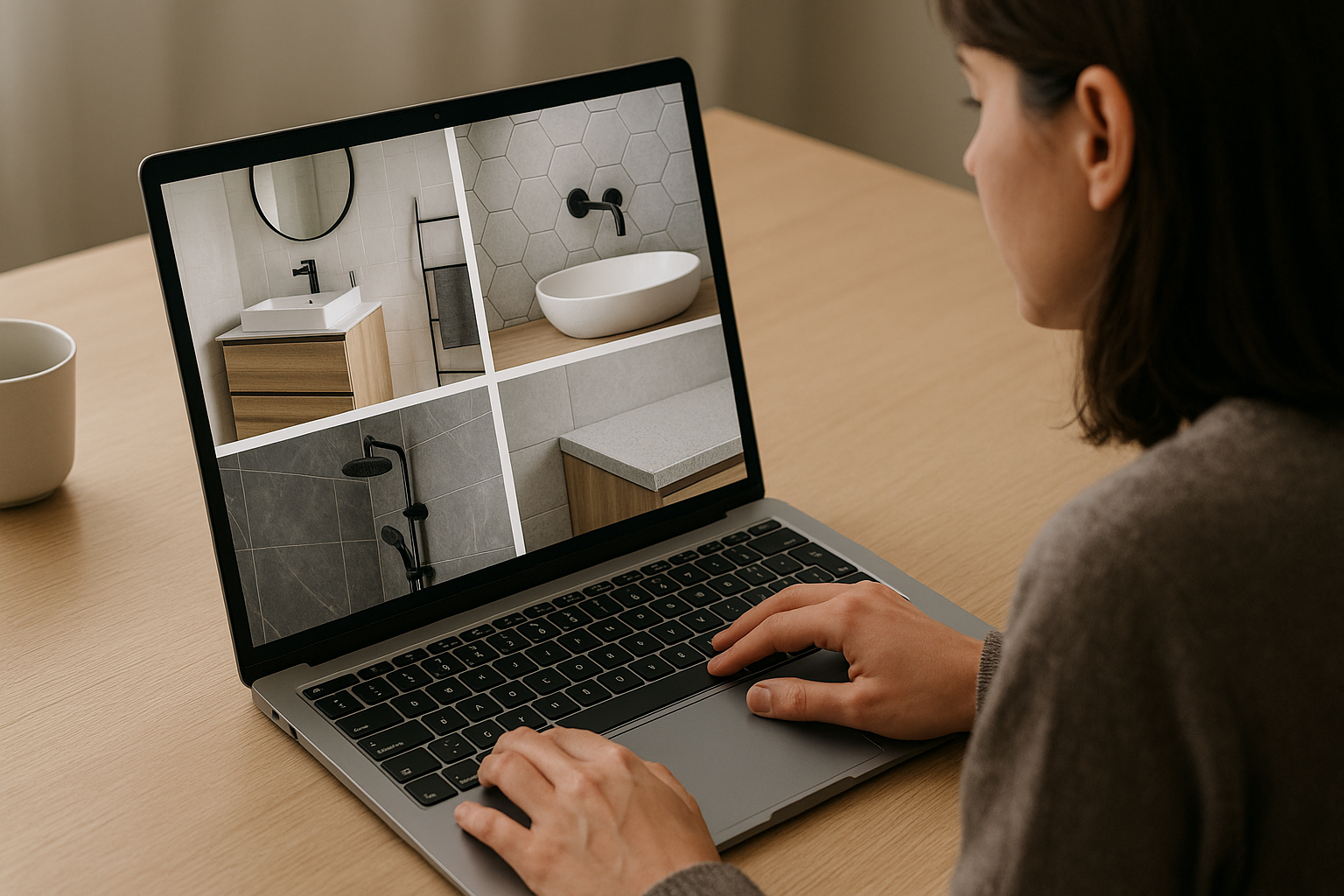Construction Industry Developments in 2021+
From CPG to Restaurants to the Entertainment industry, Setup has kept an eye on the ever-changing marketing landscape in a multitude of industries. Since the pandemic led to an increase in activities including home improvement efforts, we wanted to check in on the Construction industry to see if they’re building anything noteworthy in the next year.
Read more - Masonite’s 2021 “Crossing the Threshold” Report offers insights into the trends that are shaping today's home designs.
We spoke with marketing leaders from Masonite, Formica, Advanced Drainage Systems, Inc., Halco Lighting, Wilsonart, and more about what they’ve experienced in the last year and their predictions for the upcoming year.
Q1: What innovative changes are happening in Construction and Remodeling?
Demand
“Q2 2020 was off to a shaky start across virtually every industry, especially construction,” DEFINITION 6’s SVP, Group Account Director MP Loyd shared. “While the industry could make a quick comeback, it wasn't without its challenges, namely labor shortages, raw material delays, and increased costs. To streamline the process with fewer resources, the industry had to evolve and leverage technology across their customer journey from beginning to end.”
Digitization of the buying process
Between demand, the pandemic, and an increasingly changing space, Amy Gath, the VP of Marketing at Formica, confirmed how the Construction industry is moving towards digitization. “From browsing colors to ordering samples, interior designers and homeowners alike are increasingly doing the majority of the standard buying cycle online. To its credit, the industry was largely well-prepared for this shift.”
Other leaders confirmed that the industry was already headed in this digital direction and believe it will be a larger part of customer outreach in the future. MP Loyd detailed multiple ways Construction is turning digital, and the benefits from such efforts:
An industry that has always revolved around in-person deals, quotes, and handshakes had to evolve quickly. Sales representatives had to figure out how to close a deal remotely. That included getting a generation of sales reps who have been ardently anti-technology to complete and update leads in a CRM—a task companies have been working on for years.
Using technology and data insights to manage projects remotely drove improvements in communication and efficiencies across the board.
A growing demand for social media support and training for small construction businesses.
Companies that used to rely on boots on the ground for everything, from an estimate to closing the deal, can now leverage Google Earth, drones, and software to provide estimates more efficiently.
CRM adoption and/or increased sophistication to supporting automated and personalized email programs to guide customers through their journey and increase sales.
AR/VR technology now allows customers to envision their project and make decisions, like picking their own tile finishes, earlier in the process.
Danielle Mikesell, Global Executive VP of Marketing and Design at Wilsonart, expressed how Wilsonart is embracing digital by “reimagining their websites and turning to digital ads to spark design and project inspiration among architects, designers, and consumers.”
She added, “We also have seen the growth of ‘click and collect,’ a hybrid e-commerce model where consumers shop and buy online and then pick up in-store or curbside. This has led many construction and décor product companies to search for ways to meet this new demand. Now items traditionally shopped for in stores are available to purchase and pick up with the click of a button.”
Self service tools
Brian King, the EVP of Marketing, Product Management and Sustainability at Advanced Drainage Systems, Inc., shared that because businesses like Amazon have readily available resources, consumers are more likely to take things into their own hands “for self service tools for building and construction design, product ordering, etc.”
Cross-channel traffic thinking
Emily Kantsios, Marketing Manager at Halco Lighting, explained how B2B marketing is becoming as increasingly effective as B2C marketing. “The promotion/campaign I will run on the distributor side (B2B) creates even more awareness as the same campaign on the eComm side (B2C). Channels are now being blurred and that will continue to evolve moving forward.”
Read more - How is the B2B Industry Transforming?
Sustainability requirements
“On both the RFP end, as well as choices made around materials vendors, sustainability is becoming an increasing priority. For many manufacturers, this requires greater transparency and an increased focus on highlighting sustainability investments and commitments in their core value proposition,” shared Amanda Creger, the Director of Strategy at Modo Modo.
Mikesell cited Wilsonart’s efforts to pursue sustainability in their day-to-day operations by explaining their sustainable measures in all of their products and processes. “From raw materials to indoor air quality, we emphasize eco-consciousness throughout our organization and produce products such as the Wilsonart® High Pressure Laminate collection, which is environmentally sustainable and offers an array of designs that mimic the best of Mother Nature without impacting the environment. We consider the amount of post-consumer recycled content we use to be a differentiator that sets our products apart in the market.”
Q2: What unique partnerships have you formed with companies outside of the Construction and Remodeling industry?
Formica Partnerships:
Material Bank – an online service that offers designers free overnight samples of the materials they need quickly. From the brand standpoint, Formica is able to get their materials into the hands of more designers, and in turn, receive highly qualified leads for key projects in the commercial design industry.
Additionally, they have significant partnerships with digital companies in order to make formica.com more accessible for all visitors. Designers can access digital material libraries to download their products into their design software. Homeowners can order free samples with a few clicks of the mouse. And every site visitor can quickly find what they’re looking for with enhanced search functionality that delivers the most relevant and most popular results to the top of the page.
Advanced Drainage Systems, Inc. Partnerships:
As the second largest recycler in the US, they have formed and continue to form partnerships with local waste agencies and other organizations and governments that promote recycling efforts.
Halco Lighting Partnerships:
They are participating in an event called One Room Challenge where designers have six weeks to design a room. Halco Lighting is a sponsor and if the designer picks them, they provide a product in return for a post on their platforms, mention it in their blog, and etc. This event creates awareness to the consumer via influencers/designers that have a huge following on social channels.
Wilsonart Partnerships:
They focus their partnerships on working with reputable non-profits and service-based groups that allow Wilsonart to extend their commitment to service to help strengthen neighborhoods, foster a healthier environment and provide support to those in need. Recent partnerships outside of the Construction and Remodeling industry include the United Way, Susan G. Komen, American Cancer Society, and many more.
Masonite Partnerships:
Earlier this year, Masonite announced patent-pending technology to integrate power and internet connectivity into residential doors. They plan to leverage this revolutionary technology through collaborations with industry leaders to integrate new lifestyle and security functionality into doors that will provide additional value and peace of mind for homeowners.
Q3: What are the top trends you have noticed in 2021 within Construction and Remodeling?
Increase in demand + Raw material availability
With more people staying home, there was a huge increase in demand for building and remodeling materials. As this demand increased, the supply decreased, especially as many manufacturers had to either shut down or restrict shifts. But even as manufacturers were ready to reopen, there was a big backlog in demand for raw materials and many international borders remained closed. This has led to a desire for more domestic supply chains to bolster consumer confidence that when they order a product, it will be delivered in a timely fashion.
The decrease in supply and lack of materials has increased costs. Creger added, “The rising cost of materials and supply chain shortages are driving the need for ancillary cost and time savings. We’re in uncharted waters right now, and organizations that have the consultative capabilities and the organizational agility to partner with customers in finding creative solutions to these skyrocketing costs and project delays/cancelations will be well-positioned against competitors who are stuck in a more transactional model.”
Connectivity
This last year made everyone stay even more connected digitally. Between consumer-facing and team management efforts, everything was handled online or over the phone.
Personalization + Practical design
Consumers are ordering/designing products to match their specific lifestyles and needs. Mikesell predicted that designs will incorporate “elements of nature” moving forward. Loyd shared, “We continue to see more and more unique builds and interiors based on practical lifestyle needs. Consumers want functional spaces at home and work, and offices are looking for innovative ways to adapt to the new way of flexible working.”
Mikesell backed up this claim by citing a recent JBREC Report that shows “new home sales rose 79% and new single-family home starts are up 114% year over year.” She added, “With homes having become the epicenter, people are seeking floor plans and materials that add value, beauty, ease, and enjoyment to their lives.”
A number of these floor plans include hybrid set ups that are used flexibly between work and play. “For example,” Masonite’s Chief Marketing Officer and Senior Vice President, Jennifer Renaud, shared, “remodelers are adding doors to a formal living or dining space so that it can also serve as a home office. French doors with glass are a popular choice because they offer light and privacy, while maintaining a sense of openness and connection to the rest of the home.”
“We believe these trends toward multi-purpose spaces will continue, and as families spend more time working, learning and playing at home, sound control throughout the entire dwelling becomes more important.” To meet this need, Masonite created solid core doors which provide 70% more sound dampening material.
Getting a dream home that fits all preferences may be a costly endeavor, but according to Matthew Allbritton, a Regional Sales Manager for Halco Lighting, consumers prioritize saving time and getting the job done quickly as opposed to cost.
Saying goodbye to DIY projects
Being stuck at home led to an increase in DIY projects during the beginning of the pandemic. Those, however, have slowed down. “While I don't believe construction will grind to a halt or even slow down for the remainder of the year, I do believe that retail ‘DIY’ material demand will decrease,” Loyd shared.
Cleanable surfaces/materials
After the last year, most businesses have incorporated rigorous cleaning and safety measures. Mikesell shared, “For the commercial industry, we see the demand for surfaces that hold up to rigorous cleaning procedures, which will continue to be necessary for common areas in healthcare, hospitality, educational facilities, and beyond. Cleanliness has perhaps never been more vital, and Wilsonart laminate surfaces are non-porous, on-trend, easy to care for, and can withstand even the most rigorous cleaning and disinfecting protocols.”
Simplistic + calming designs
“Many homeowners are actively looking for simpler, more sustainable solutions when making improvements to their homes,” shared Renaud. “Masonite was founded on an idea to turn wasted wood into useful building products. Nearly a century later, we continue to evaluate the sustainability and impact of our products by innovating new processes that make doors last longer.”
The last year also revealed the importance of mental health and wellness, and how your environment can shape your well-being. “Homeowners are proactively seeking neutral and minimalistic home designs to create calming spaces. Thoughtful material choices, such as natural dyed wood blended with interesting textiles, results in a more soothing environment.”
Like it did for most industries, the pandemic shone a light on opportunities for growth and improvement. The Construction and Remodeling industry is prioritizing their consumers' needs by digitizing processes, providing materials that benefit personal lifestyle and hygienic preferences, and offering alternative outlets for connection.



































Over the past year, we’ve watched the following patterns emerge across seemingly unrelated sectors: rising consumer expectations, demand for authenticity, growing complexity, and the tension between automation and human connection.
We interviewed multiple marketers from an array of industries in our blogs below, and we discovered consistent trends across the board. Check out all of our industry blogs throughout 2025 from leaders at Blackbaud, Hiscox USA, Mimedx, MONPURE, Kimberly-Clark Professional, and more.